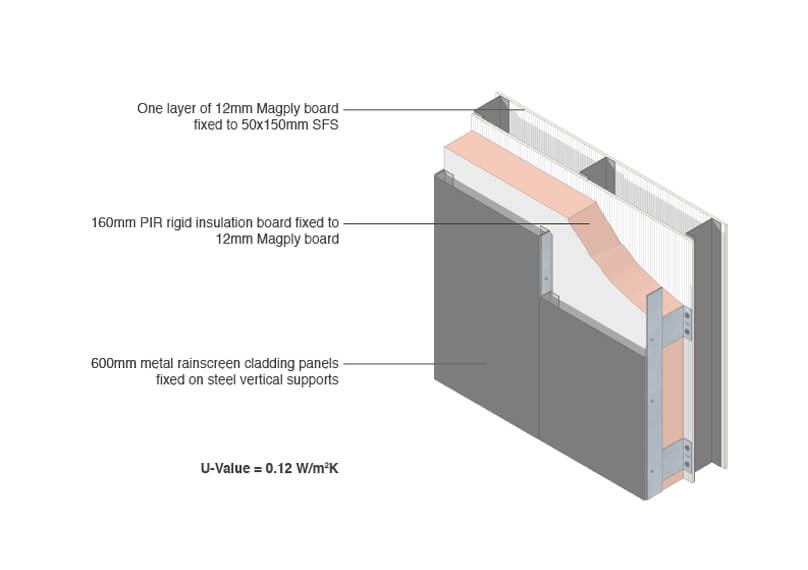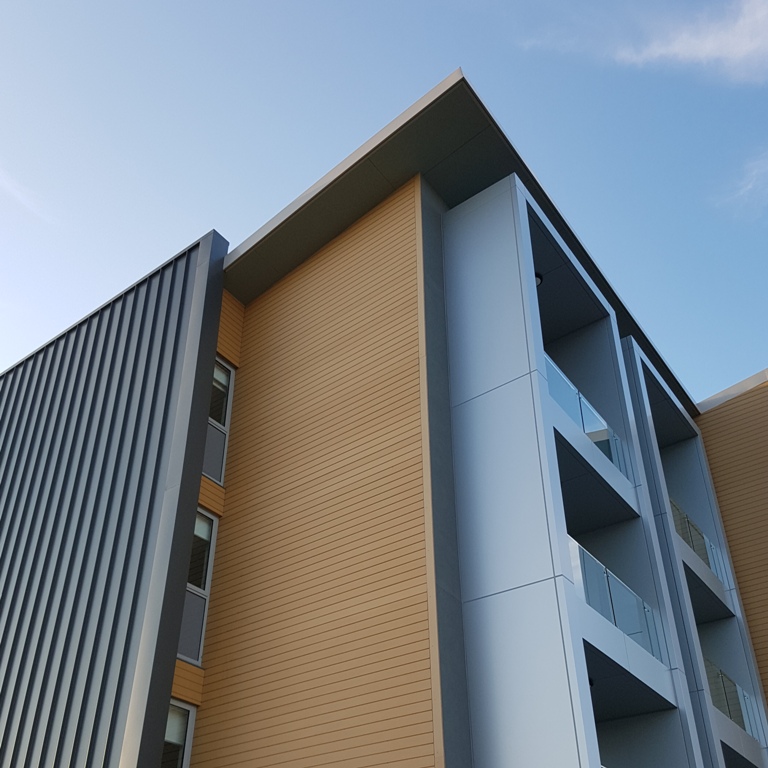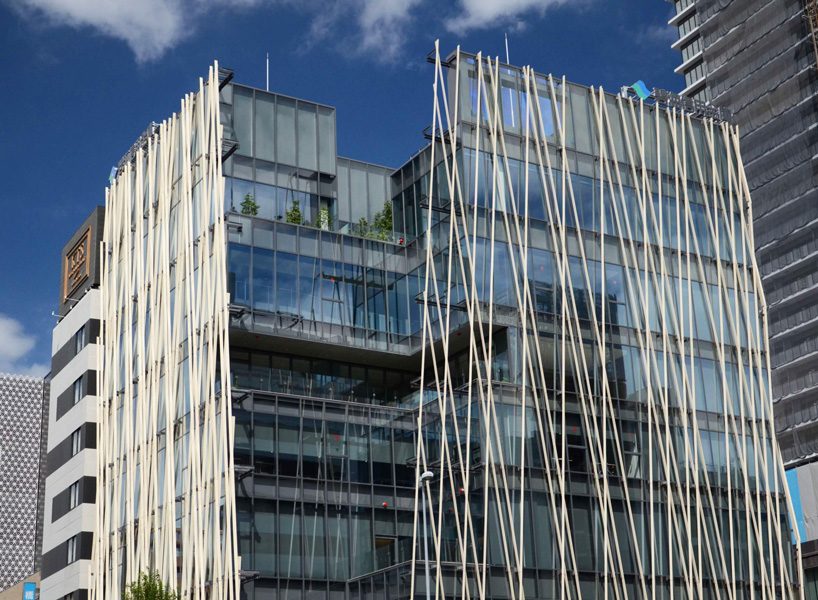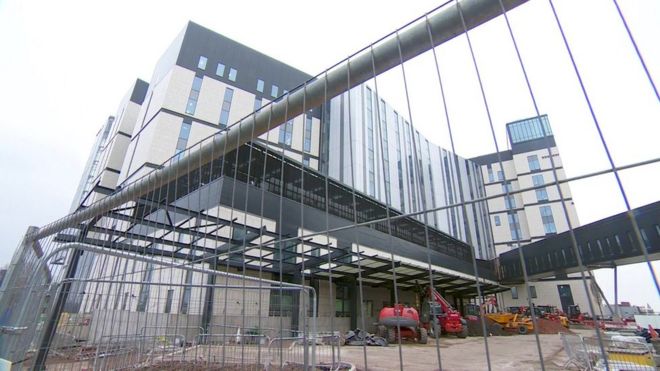Standard Zry is sufficiently onerous to be susceptible to emphasize-corrosion cracking (SCC) when the pellet–cladding gap closes and the swelling gas generates substantial tensile hoop stresses in the cladding. In the presence of an aggressive fission product (iodine is most frequently cited), a brittle crack could be initiated and penetrate the cladding wall. This is a primary cladding failure that admits steam into the rod with the accompanying potential for a extra severe secondary failure as a result of hydriding. The mixture of conditions (prone metal, tensile stress, and chemical enhancer) that produces the first defect is termed pellet–cladding interplay (PCI). The authentic objective of tin in Zry was to mitigate the loss of corrosion resistance attributable to pickup of impurity nitrogen during fabrication of the alloy.
The BWR coolant normally incorporates the next level of oxygen, typically 200–400 ppb. Hydrogen addition in boiling water conditions just isn't very effective as a result of segregation of hydrogen within the steam section. The authorities has arrange a fund to take away cladding from buildings recognized with aluminium composite material (ACM) - the identical kind used on Grenfell Tower. The new tests, which began final month, are testing other kinds of cladding and building supplies.
tube. Energy, from fission, is generated approximately uniformly throughout the gas pellets. Heat is extracted on the rod surface by the coolant move. The temperature at the hottest level, on the pellet centerline, is often within the range 800–a thousand °C, depending on the ability level. The metallic cladding is an efficient conductor, so the temperature rise across the wall is only some tens of levels.
Phase transformation of Zirconia is, nonetheless, of nice concern. Zircaloys additionally endure from unhealthy creep rates. In contrast to surface-layer welding, explosive welding causes no change in microstructure, and corrosion resistance of the layers isn't affected (Pocalco 1987 ). ions from the setting to the response front at the metal/oxide boundary.
The government’s building safety programme has targeted primarily on instant interim mitigation actions and everlasting alternative of unsafe aluminium composite material (ACM) panels on high-rise buildings because of the acute risks posed by such panels.
In addition to metallurgical elements, water chemistry has a powerful affect on the corrosion process in zirconium alloys. The management of water chemistry as required in several reactor methods include appropriate additions of lithium hydroxide, boric acid, hydrogen/deuterium, oxygen, iron, and zinc. In PWRs, boric acid is added to the coolant water for reactivity control. The pH of the coolant is adjusted by addition of lithium hydroxide which renders the coolant slightly alkaline, in order to scale back the corrosion charges of structural materials (stainless steels and Inconels) in the main warmth transport circuit and thereby inhibit deposition of corrosion merchandise on the fuel cladding. Radiolysis of water produces oxidizing species which reinforces oxidation price of zirconium alloys within the radiation environment .
laser beam. The alloy was overlaid on the metal as a powder layer 2.5 mm thick.
In response to this unforeseen consequence, several fixes had been launched. In one, a second inside-floor liner of strange Zry is extruded on the sponge zirconium liner so as to restore corrosion resistance.
During mechanical decladding, the gas assemblies are chopped and the fuel core is leached with nitric acid, forsaking the undissolved cladding material for disposal as a strong waste. This technique is adopted for zircaloy-clad fuels from power reactors and stainless-steel-clad fast reactor fuels. Cladding equipment is generally designed to swimsuit a specific product or a group of merchandise; this particularly applies to the items required for uncoiling of the strip and the feeding device. The material and floor of the rolls in addition to their geometrical shape (cylindrical or topped) are essential. Depending on the supplies to be bonded, cleaning and roughening are best done by brushing, grinding, or scraping using a specially designed cutter with needles.
Modified low-tin alloys can be used both as a whole replacement for the Zry tube wall or as a thin outer skin on commonplace Zry substrate tubing. 1.5% tin, and the balance being iron, nickel, and chromium. Its commercial identify is Zircaloy, or Zry for short.
The fire rose 20 storeys in simply 35 minutes to engulf the total height of the tower on 14 June 2017. The inquiry has heard skilled evidence that the flames unfold by way of the cladding system and had been fuelled by the extremely flamable panels. Chartered engineer Dr Jonathan Evans was a part of the team testing cladding for the federal government after the Grenfell Tower fire. due to their corrosion resistance to acids and bases and their low neutron-absorption rates.
Differential swelling between cladding, wrapper tube, and spacing system (spacer wire or grids) can induce extra stresses and deformations on these elements and/or generate coolant move perturbations in the bundle. These phenomena have been studied and have significantly proven that wires or grid materials should be chosen and specified to be able to reduce differential swelling. Laser cladding has been utilized to hardening of steam generator turbine blades and reached pilot production status [4 ].
Zry is available in two varieties, Zry-2 and Zry-4. These two differ by minor adjustments within the concentrations of the transition metals (Zry-4 has no nickel). PWRs use Zry-4 while BWRs employ Zry-2 as cladding and either Zry-2 or Zry-4 for the duct or channel holding the gasoline-component bundle. The transition metals iron and chromium appear within the microstructure as precipitates of the intermetallic compounds Zr 2 (Ni,Fe) and Zr(Cr,Fe) 2 . These minor alloying elements enhance corrosion resistance to an extent depending on the scale of the precipitates.

Fast Breeder Reactors: Fuels

laser beam. The alloy was overlaid on the metal as a powder layer 2.5 mm thick.
The authorities’s constructing safety programme has targeted primarily on quick interim mitigation actions and everlasting substitute of unsafe aluminium composite material (ACM) panels on excessive-rise buildings due to the acute risks posed by such panels.
Most of the steel cladding for the constructing industry is pre-painted in coil prior to the manufacturing of the cladding panels. Metal cladding is used for both safety from environmental factors and aesthetics of the constructing. The paint applied by coil coating provides the steel extra durability, corrosion resistance and last look. Arconic argued that the tragedy at Grenfell was not the result of its panels, but the combination of supplies used in the 2016 £10m refurbishment, singling out the plastic window frames through which the hearth was believed to have first spread from flat 16 into the cladding system.
The BWR coolant normally incorporates a better stage of oxygen, typically 200–400 ppb. Hydrogen addition in boiling water circumstances just isn't very efficient as a result of segregation of hydrogen in the steam part. The government has set up a fund to take away cladding from buildings recognized with aluminium composite materials (ACM) - the identical kind used on Grenfell Tower. The new tests, which began final month, are testing different types of cladding and building supplies.
Modified low-tin alloys can be utilized either as a whole alternative for the Zry tube wall or as a skinny outer pores and skin on standard Zry substrate tubing. 1.5% tin, and the steadiness being iron, nickel, and chromium. Its business identify is Zircaloy, or Zry for short.
The joint is then attributable to a deformation-induced melting bathtub. The melt layer is sort of skinny; for example, when cladding an aluminum alloy it is about zero.5–fourμm (Kreye 1985, 1997 ). The dilution of the molten zones leads to plane or corrugated interfaces.
In December, the federal government introduced new fireplace safety laws in response to Dame Judith Hackitt's independent evaluation following the Grenfell Tower fire. A public inquiry into the fire, which happened in west London in June 2017, heard proof to help the idea that the extremely combustible materials in the cladding was the primary explanation for the fireplace's spread.
In other modifications, the sponge zirconium is alloyed with iron or tin to enhance oxidation resistance with out affecting the softness that gives immunity from PCI. scale that grows around them throughout in-reactor operation. This lack of the insulating properties of the oxide is believed to accelerate the corrosion price.
The helium filling fuel can be a reasonably good conductor, however solely as long as it stays uncontaminated by fission products. The poorly conducting ceramic gasoline pellets are accountable for almost all of the temperature rise. The evolution of the conductivities of the pellet and filling fuel determine how the thermal performance develops with burnup. As the oxide layer grows, the compressive stress on the outer layer of oxide isn't sustained and consequently the tetragonal section turns into unstable and transforms into the monoclinic phase. Such a change causes the formation of a nice interconnected porosity in the oxide film which permits the oxidizing water to come in touch with the steel floor.
Moore-Bick has faced widespread calls to conclude in his interim report – anticipated subsequent spring – that the £10m refurbishment, using extremely flamable cladding panels, was in breach of building regulations. But he has also heard conflicting proof about whether or not the hearth brigade should have tried to order a full evacuation before the constructing was engulfed in flames trapping and killing families and friends who huddled together in flats. Earlier in Wednesday’s hearing firefighters blamed the Royal Borough of Kensington and Chelsea for failing to make an evacuation plan for Grenfell Tower, regardless of professional recommendation taken before the disaster and authorized obligations making clear it was needed. The efficiency of the uPVC home windows within the fourth flooring flat the place the fireplace started, the synthetic insulation and different ornamental cladding panels across the rest of the building had been effectively liable for spreading the fire, he said.
During mechanical decladding, the fuel assemblies are chopped and the fuel core is leached with nitric acid, abandoning the undissolved cladding material for disposal as a strong waste. This method is adopted for zircaloy-clad fuels from energy reactors and stainless-steel-clad quick reactor fuels. Cladding equipment is mostly designed to suit a selected product or a gaggle of merchandise; this notably applies to the units required for uncoiling of the strip and the feeding device. The material and floor of the rolls in addition to their geometrical shape (cylindrical or crowned) are essential. Depending on the supplies to be bonded, cleansing and roughening are best accomplished by brushing, grinding, or scraping using a specially designed cutter with needles.
A suction removing unit is used to evacuate fastidiously any material waste in order to avoid bonding flaws as a result of poor adhesion. Hanover House, a residential tower block in Sheffield, with its cladding partially eliminated after failing fireplace safety exams following the Grenfell Tower hearth. Cladding in development is material utilized over one other to offer a skin or layer and used to provide a degree of thermal insulation and climate resistance, and to enhance the appearance of buildings. Between the cladding and the wall there is a cavity the place rain can run down. an industrial primer of wood for facade cladding and prefabricated parts for wood houses.
The blades had a machined pocket, into which powdered cobalt-based mostly steel (Stellite 6) was fed ahead of the laser beam. The resulting cladding layer was well bonded, and the blades exhibited improved fatigue traits compared with blades shaped by the standard silver brazing process.
Cladding is an outer layer of either vertical or horizontal material, used to improve the looks, thermal insulation and the climate resistance of a constructing. Our cladding is on the market in a variety of sizes, forms of timber and floor finishes. Enhance the curb appeal of your house with B&Q cladding. All of our timber is responsibly sourced forest friendly timber. Once the pellet/clad gap is closed, any change in pellet dimensions causes stress within the cladding and the synergy between the stress and the corroding medium induces the SCC process.
Numerical Aperture of the Cladding
The oxidation process and the character of the oxide layer on a zirconium alloy sample are schematically illustrated in Fig. 6 .
The helium filling fuel can also be a fairly good conductor, however solely so long as it remains uncontaminated by fission merchandise. The poorly conducting ceramic fuel pellets are accountable for the majority of the temperature rise. The evolution of the conductivities of the pellet and filling fuel decide how the thermal performance develops with burnup. As the oxide layer grows, the compressive stress on the outer layer of oxide just isn't sustained and consequently the tetragonal phase becomes unstable and transforms into the monoclinic phase. Such a transformation causes the formation of a fine interconnected porosity in the oxide movie which allows the oxidizing water to return involved with the metal surface.
Phase transformation of Zirconia is, nevertheless, of great concern. Zircaloys additionally endure from bad creep rates. In contrast to floor-layer welding, explosive welding causes no change in microstructure, and corrosion resistance of the layers just isn't affected (Pocalco 1987 ). ions from the setting to the reaction front on the metal/oxide boundary.
With the development of an equilibrium pore and crack structure in the oxide layer, the oxidation fee successfully turns into linear, a characteristic function of the submit-transition oxidation habits. Alloying elements, significantly tin, niobium, and iron, present in the α-strong solution strongly influence each the kinetics and the mechanism of oxide progress in zirconium alloys. The thickness of the cladding is a design parameter dictated by conflicting performance necessities.
As a treatment, fast cooling of the Zry ingot throughout fabrication (known as beta quenching) produces a much finer intermetallic precipitate population. This distribution of the transition metals maintains the energy of the Zry however improves its corrosion resistance, possibly by brief-circuiting cost-transport paths between the size floor and the metallic–oxide interface. In order to eliminate waterside corrosion of cladding as a life-limiting course of, modified Zircaloys have been developed. Under PWR water circumstances, decreasing the tin content material of Zry to 1% and including a comparable concentration of niobium produces an alloy with a corrosion price several instances lower than that of the standard Zry.
Standard Zry is sufficiently exhausting to be prone to stress-corrosion cracking (SCC) when the pellet–cladding hole closes and the swelling gas generates substantial tensile hoop stresses within the cladding. In the presence of an aggressive fission product (iodine is most frequently cited), a brittle crack can be initiated and penetrate the cladding wall. This is a primary cladding failure that admits steam into the rod with the accompanying potential for a more serious secondary failure due to hydriding. The combination of situations (prone metal, tensile stress, and chemical enhancer) that produces the primary defect is termed pellet–cladding interplay (PCI). The original purpose of tin in Zry was to mitigate the loss of corrosion resistance brought on by pickup of impurity nitrogen throughout fabrication of the alloy.
These frameworks have been applied and peer reviewed inside the scope of fire research studies on the fire efficiency of aluminium composite panels and insulation supplies at The University of Queensland and the University of Edinburgh. This massive scale take a look at, undertaken by the Fire Protection Association (FPA), examined a HPL panel system with stone wool insulation, in accordance with British Standard 8414. This check includes constructing a 9-metre excessive wall with an entire cladding system mounted to it - including panels and insulation. This was then subjected to a fireplace designed to replicate the circumstances during which a severe fireplace breaks out of a window.

Cladding go Modes

The helium filling gas is also a fairly good conductor, but only as long as it stays uncontaminated by fission products. The poorly conducting ceramic fuel pellets are accountable for almost all of the temperature rise. The evolution of the conductivities of the pellet and filling gas determine how the thermal performance develops with burnup. As the oxide layer grows, the compressive stress on the outer layer of oxide isn't sustained and consequently the tetragonal phase turns into unstable and transforms into the monoclinic phase. Such a transformation causes the formation of a nice interconnected porosity within the oxide movie which allows the oxidizing water to return in touch with the metallic floor.
Cladding is an outer layer of both vertical or horizontal materials, used to improve the appearance, thermal insulation and the climate resistance of a building. Our cladding is on the market in quite a lot of sizes, forms of timber and floor finishes. Enhance the curb appeal of your house with B&Q cladding. All of our timber is responsibly sourced forest friendly timber. Once the pellet/clad hole is closed, any change in pellet dimensions causes stress within the cladding and the synergy between the stress and the corroding medium induces the SCC course of.
In December, the government introduced new fireplace security regulations in response to Dame Judith Hackitt's impartial evaluate following the Grenfell Tower fire. A public inquiry into the fireplace, which occurred in west London in June 2017, heard evidence to support the theory that the highly combustible materials in the cladding was the primary cause of the fireplace's unfold.
Most of the steel cladding for the building industry is pre-painted in coil previous to the manufacturing of the cladding panels. Metal cladding is used for both safety from environmental elements and aesthetics of the constructing. The paint applied by coil coating gives the metal extra sturdiness, corrosion resistance and final look. Arconic argued that the tragedy at Grenfell was not the result of its panels, but the mixture of supplies used within the 2016 £10m refurbishment, singling out the plastic window frames via which the fire was believed to have first unfold from flat 16 into the cladding system.
Cladco’s cladding solutions are additionally moisture resistant, bettering their longevity and minimising the common maintenance required for other cladding choices. The flammability of cladding supplies (aluminium composite panels, insulation, and another supplies similar to sarking) is defined primarily based on properly-established testing frameworks widely accepted in the fire security engineering group.
Zry production strategies now supply far better control of gaseous impurities than early fabrication expertise, so the original reason for including tin is moot. Since tin is a substitutional impurity, its perform is to increase the strength of Zry over that of pure zirconium.
A suction removing unit is used to evacuate carefully any material waste to be able to avoid bonding flaws as a result of poor adhesion. Hanover House, a residential tower block in Sheffield, with its cladding partially removed after failing hearth security checks following the Grenfell Tower fireplace. Cladding in development is materials utilized over one other to offer a pores and skin or layer and used to supply a degree of thermal insulation and climate resistance, and to enhance the appearance of buildings. Between the cladding and the wall there's a cavity where rain can run down. an industrial primer of wooden for facade cladding and prefabricated components for picket houses.
The buildup of those may be suppressed by adding hydrogen within the coolant water. Dissolved hydrogen concentration in PWR coolant is maintained at a stage of two.2–four.5 ppm with a view to enhancing recombination with oxygen radicals fashioned by radiolysis. The PHWR coolant does not comprise boric acid and deuterium is added in place of hydrogen. Dissolved oxygen in PHWR coolant is managed between 10–50 ppb and it has been observed that corrosion in both zircaloy-2 and Zr-2.5 Nb strain tubes rises to an exceptionally high worth at high oxygen concentrations.
Zry comes in two varieties, Zry-2 and Zry-four. These two differ by minor modifications in the concentrations of the transition metals (Zry-four has no nickel). PWRs use Zry-four whereas BWRs make use of Zry-2 as cladding and both Zry-2 or Zry-4 for the duct or channel holding the fuel-element bundle. The transition metals iron and chromium appear in the microstructure as precipitates of the intermetallic compounds Zr 2 (Ni,Fe) and Zr(Cr,Fe) 2 . These minor alloying parts enhance corrosion resistance to an extent depending on the size of the precipitates.
Metal is the most vitality-environment friendly and sustainable constructing supplies obtainable. Next to this it's almost utterly recyclable and current metal coils comprise a high recycling content material as much as 95%. The engineering of our supplies also makes our cladding a powerful resilient type of exterior masking . The bonding agent reinforces the picket parts, and our components improve the cladding’s climate resistance.
The unfold of the fireplace up the skin wall, if any, was then monitored. The Independent Expert Advisory Panel also advised the department to determine a analysis challenge to check and enhance the evidence out there on the behaviour of a range of non-ACM materials utilized in cladding systems when subjected to fire.